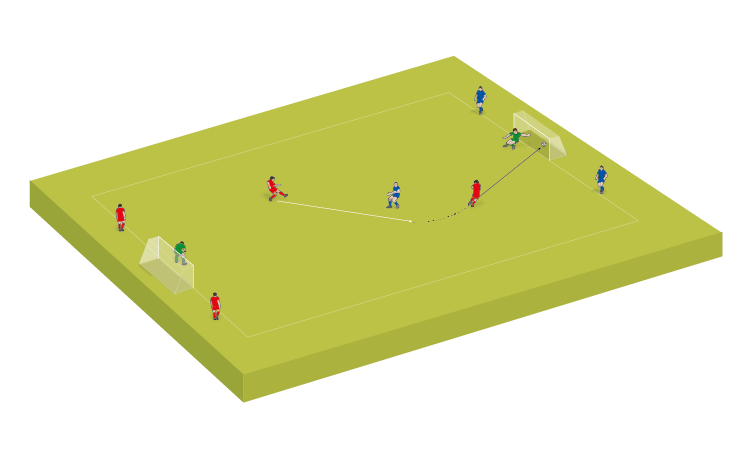Tactical thoughtfulness and the effective coach
United Soccer Coaches’ IAN BARKER on turning basic formations into systems
For “tactics”, read “decisions”.
In any 1 v 1 activity, there a number of decisions available to both the player in possession, and the opponent.
When the ball is turned over, there are decisions to be made on both sides of the moment. Expand the player numbers to 2 v 2, all the way through to 11 v 11, and the possible decisions scale exponentially.
Appreciating the complexity of the full- sided game helps the coach in development. Small-sided play makes a lot of sense in the technical development of players.
It makes equal sense in terms of cognitive development and supporting their recognition of significant game moments, through repetition in training with immediate and deliberate feedback.
A coach will be similarly challenged to develop their approach as they develop.
Formation choice can seem a relatively modest decision for a coach to make. It does not require great experience or insight to list four numbers in a row that add up to 11, like (1)-4-4-2, or (1)-4-3-3 - where the 1 is, of course, the goalkeeper.
The apparent added sophistication of an additional number - like (1)-4-3-2-1, or (1)-4- 1-4-1 does not, on its own, stem from much more significant thought.
Once the formation becomes the duly stated basic tactical approach of the coach, deeper questions must be addressed.
- Is the formation based upon your personal preference and knowledge base?
- Is the formation based upon your available talent pool?
- Is the formation in response to perceived challenges of the next opponent?
- How does your formation become a system employed as the game progresses?
The answer to this last question, especially, is central in identifying the thoughtful, intentional and progressive coach, be that at grassroots or senior professional level.
In possession, to go to goal, the team will look to go through, around or over the opponent. This can be done very directly, at a high tempo or more deliberately and circumspectly.
The approach to attacking possession can be influenced by weather conditions and game frequency. It can be influenced by the disposition of the opponent, the scoreline or the moment in the game. The coach who can consider, account for and prepare the team with this understanding is giving their players a deep value.
"The effective coach makes decisions based on inputs they find most valuable..."
Out of possession, defending the goal or dangerous areas of the field, the team must look to identify where it will confront the opponent to win the ball.
How high or deep a team presses, the consideration of the offside rule and the comfort level of the goalkeeper managing space behind the back line are just some of the things that transform any formation into an intentional system.
We understand that in our coaching rubric we use, “When?, Where?, Why?, What?, Who? and How?” to challenge and improve the players. The same rubric must apply to the effective coach.
The effective coach is one who is always actively making decisions based on the inputs they find the most valuable.
Every coach can state a formation, but it is the effective coach who can account for their choice of a formation based on the manner and style they wish the team to play in.
This is how a formation becomes a system, with intentional decision-making or, explained in another way - tactical thoughtfulness.
Related Files
Newsletter Sign Up
Coaches Testimonials

Gerald Kearney, Downtown Las Vegas Soccer Club

Paul Butler, Florida, USA

Rick Shields, Springboro, USA

Tony Green, Pierrefonds Titans, Quebec, Canada
Subscribe Today
Discover the simple way to become a more effective, more successful soccer coach
In a recent survey 89% of subscribers said Soccer Coach Weekly makes them more confident, 91% said Soccer Coach Weekly makes them a more effective coach and 93% said Soccer Coach Weekly makes them more inspired.
*includes 3 coaching manuals
Get Weekly Inspiration
All the latest techniques and approaches
Soccer Coach Weekly offers proven and easy to use soccer drills, coaching sessions, practice plans, small-sided games, warm-ups, training tips and advice.
We've been at the cutting edge of soccer coaching since we launched in 2007, creating resources for the grassroots youth coach, following best practice from around the world and insights from the professional game.







